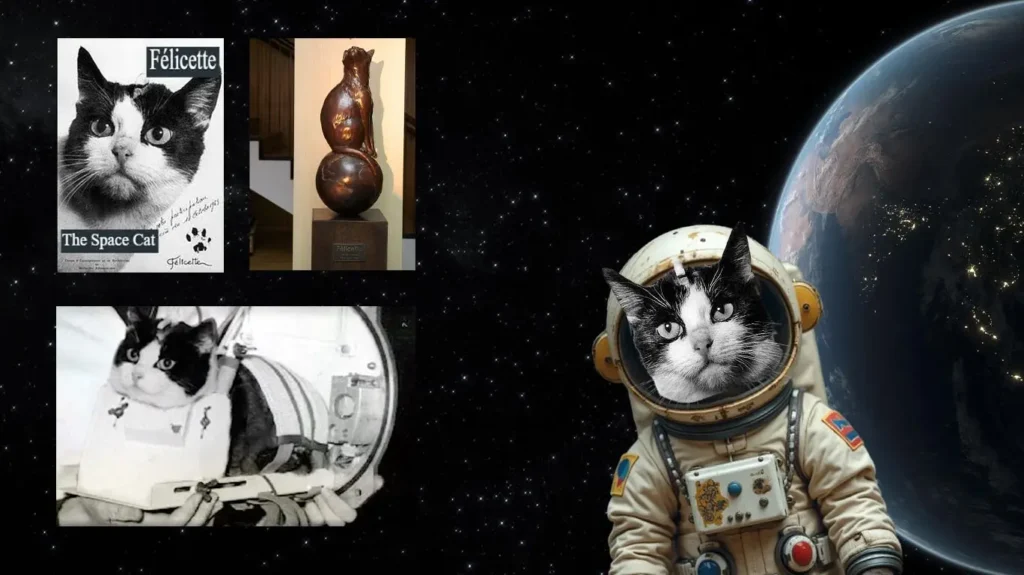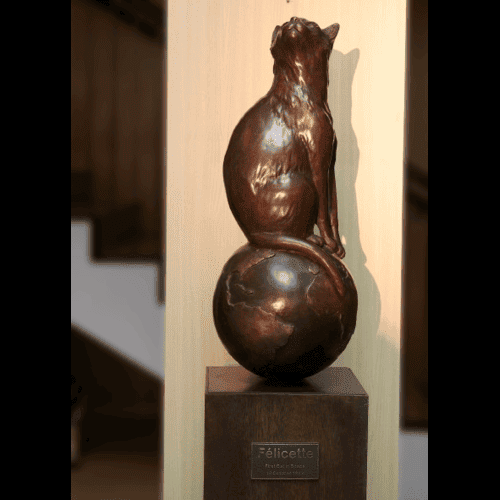Félicette: The First and Only Cat to Successfully Journey into Space

When you think about animals in space, you might immediately picture famous dogs like Laika or the numerous primates who ventured beyond Earth’s atmosphere. But have you ever heard of Félicette, the remarkable French street cat who made history as the first and only feline to successfully journey into space? Today, you’ll discover the fascinating story of this forgotten space pioneer and her incredible contribution to space exploration.
Table of Contents
Key Takeaways:
- Félicette made history as the first and only cat to successfully travel to space on October 18, 1963
- The French space program selected her from a group of street cats in Paris
- Her 15-minute suborbital flight reached an altitude of 156 kilometers
- In 2019, a bronze memorial statue was erected to honor her contribution to space exploration
- Despite her historic achievement, Félicette’s story remained largely forgotten until recent years
From Paris Streets to Space Preparation: Félicette’s Unlikely Journey
Before becoming the world’s first astronaut cat, Félicette lived as a stray on the streets of Paris. In 1963, the French space program, Centre national d’études spatiales (CNES), purchased about a dozen cats from a local dealer for their upcoming space mission studies. While this might seem like an unusual choice, there was a scientific method behind selecting cats as test subjects.
What made cats particularly valuable for space research? Scientists were interested in their exceptional balance and navigation abilities. These natural feline characteristics could provide valuable insights into how space travel might affect human astronauts.
The Rigorous Selection Process
You might be wondering how Félicette stood out from the other candidates. The selection process was remarkably thorough:
- Cats underwent extensive physical examinations
- Scientists tested their reactions to various stimuli
- Each candidate had to demonstrate good temperament
- The ability to remain calm in confined spaces was crucial
- Weight restrictions meant only smaller cats could qualify
Félicette, designated as “C 341” before her historic flight, emerged as the perfect candidate due to her calm demeanor and adaptability to the training conditions.
Preparing for the Historic Launch
The preparation for Félicette’s space journey was intensive and methodical. Scientists implanted electrodes in her brain to monitor neural activity during the flight. This might sound extreme, but it was essential for gathering valuable scientific data about the effects of space travel on living organisms.
Your modern cat might struggle with a simple carrier, but Félicette had to adapt to increasingly confined spaces during her training. The French space program designed special containers and equipment to ensure her safety and comfort during the mission.
The Historic Launch: October 18, 1963
At 8:09 AM on a crisp autumn morning, history was made at the Hammaguir launch site in Algeria. Félicette was secured in a specially designed capsule atop a Véronique AG1 rocket, about to embark on a journey that would make her the first successful feline astronaut.
The Flight Details
- Duration: 15 minutes
- Maximum Altitude: 156 kilometers (97 miles)
- G-Forces Experienced: Up to 9.5 G’s
- Vital Signs: Monitored continuously through electrodes
- Recovery: Successful parachute descent
Scientific Achievements and Data Collection
During her brief but significant journey, Félicette provided valuable scientific data. The electrodes implanted in her brain transmitted neurological readings throughout the flight, helping scientists understand how space travel affects living organisms. This information would prove invaluable for future space missions.
The Impact on Space Research
You might be surprised to learn how Félicette’s mission contributed to our understanding of spaceflight effects on living creatures. Her journey helped scientists:
- Study neurological responses in zero gravity
- Evaluate the effects of rocket acceleration on living organisms
- Test life support systems for future missions
- Advance understanding of space medicine
The Forgotten Legacy
Despite her historic achievement, Félicette’s story remained largely forgotten for decades. While other space animals like Laika became household names, the first cat in space faded into obscurity. This oversight wasn’t just unfortunate—it represented a significant gap in space exploration history.
Recognition at Last: The Memorial

In 2019, something remarkable happened. After a successful Kickstarter campaign initiated by space enthusiast Matthew Serge Guy, a bronze memorial statue was erected at the International Space University in Strasbourg, France. Finally, Félicette received the recognition she deserved for her contribution to space exploration.
Félicette’s Impact on Modern Space Programs
Today, when you look at modern space programs, you might not immediately see Félicette’s influence. However, her mission contributed valuable data that helped shape our understanding of how living creatures respond to spaceflight. This knowledge continues to inform current space research and mission planning.
Preserving the Legacy: Why Félicette’s Story Matters
Understanding Félicette’s story helps you appreciate the many unsung heroes of space exploration. Her journey represents more than just a scientific achievement—it’s a reminder of how unexpected contributors can advance human knowledge and achievement.
The Future of Animals in Space Research
While we no longer send cats into space, animal research continues to play a crucial role in space exploration. Today’s space programs focus on different aspects of research, but Félicette’s pioneering journey helped pave the way for these modern studies.
Frequently Asked Questions
Q: Why did France choose a cat for this space mission?
A: Cats were selected for their excellent balance and navigation abilities, plus their suitable size and weight for the spacecraft.
Q: Did Félicette survive her space journey?
A: Yes, Félicette successfully completed her mission and was recovered safely after the capsule returned to Earth.
Q: How long was Félicette’s space flight?
A: The entire mission lasted approximately 15 minutes, with a few minutes spent in weightlessness.
Q: What happened to Félicette after the mission?
A: While Félicette survived the flight, she was euthanized a few months later for scientific examination of her brain implants.
Q: Was Félicette really the only cat to go to space?
A: While France attempted another cat launch a week later, Félicette remains the only cat to successfully complete a space mission.
Q: How high did Félicette’s spacecraft go?
A: The Véronique AG1 rocket carried Félicette to an altitude of 156 kilometers (97 miles).
Your Next Steps in Exploring Space History
If you’re fascinated by Félicette’s story, here are some ways to learn more:
- Visit the memorial statue in Strasbourg, France
- Explore other animals’ contributions to space exploration
- Support space history preservation efforts
- Share Félicette’s story to help maintain her legacy
Remember, every time you look up at the stars, you’re gazing into the same space that once hosted this remarkable French space cat, whose brief journey helped advance our understanding of space travel and its effects on living beings.
“In the grand scheme of space exploration, sometimes the smallest pioneers make the biggest impact.”
